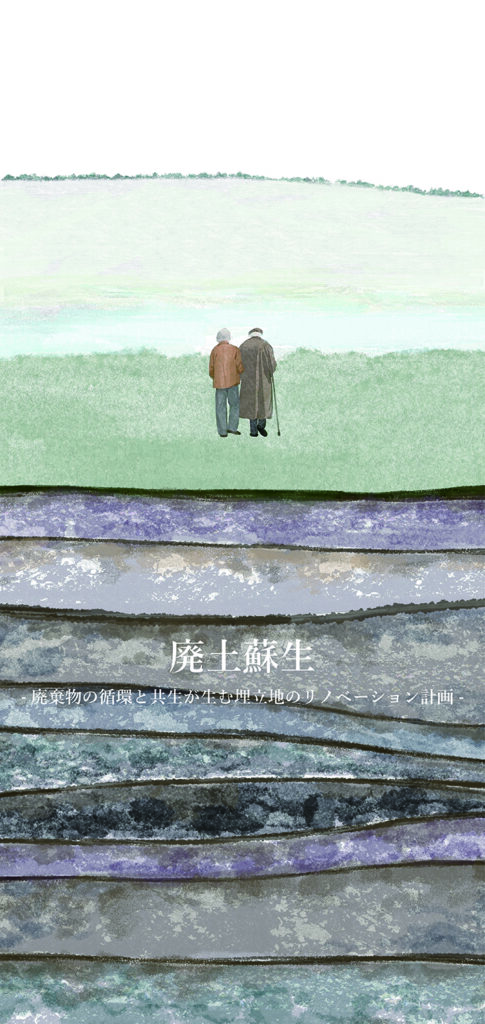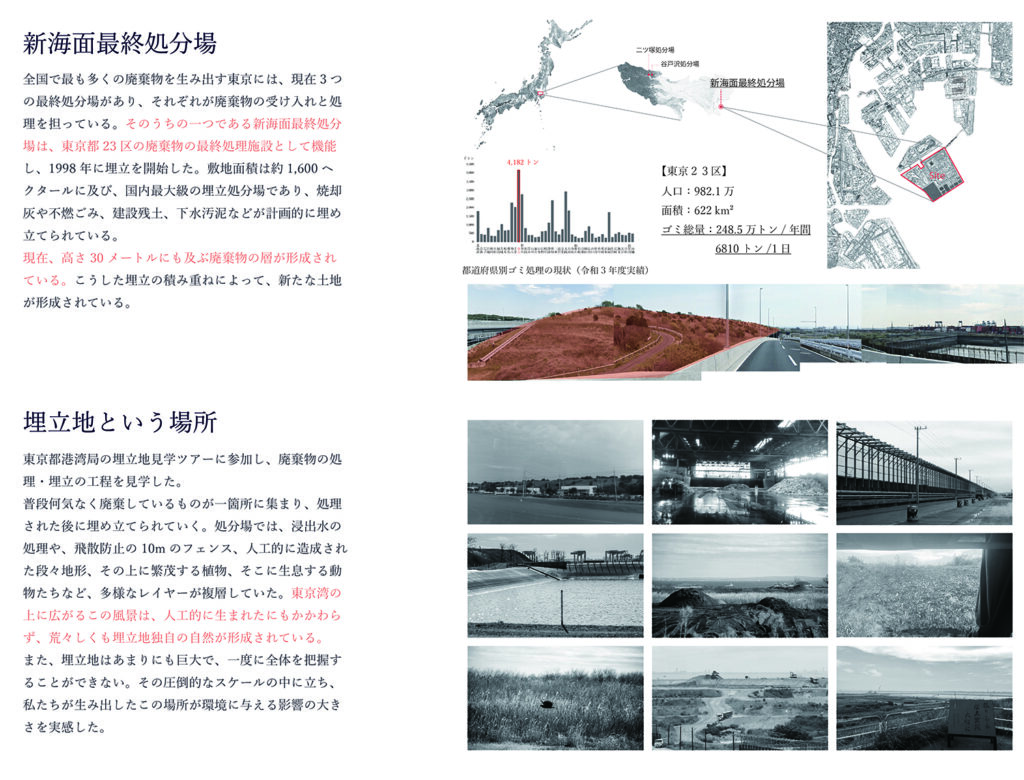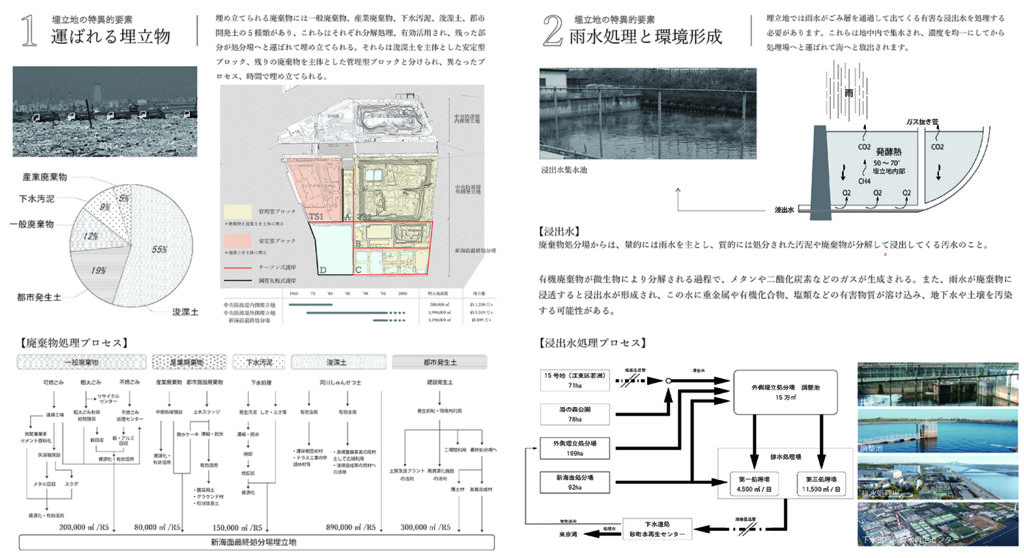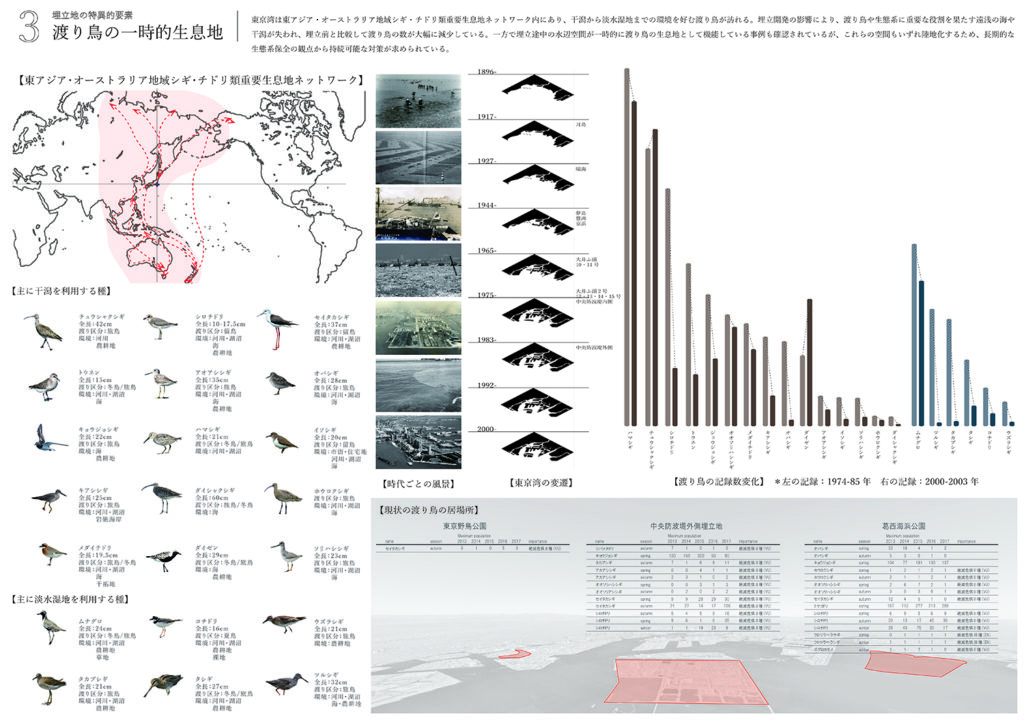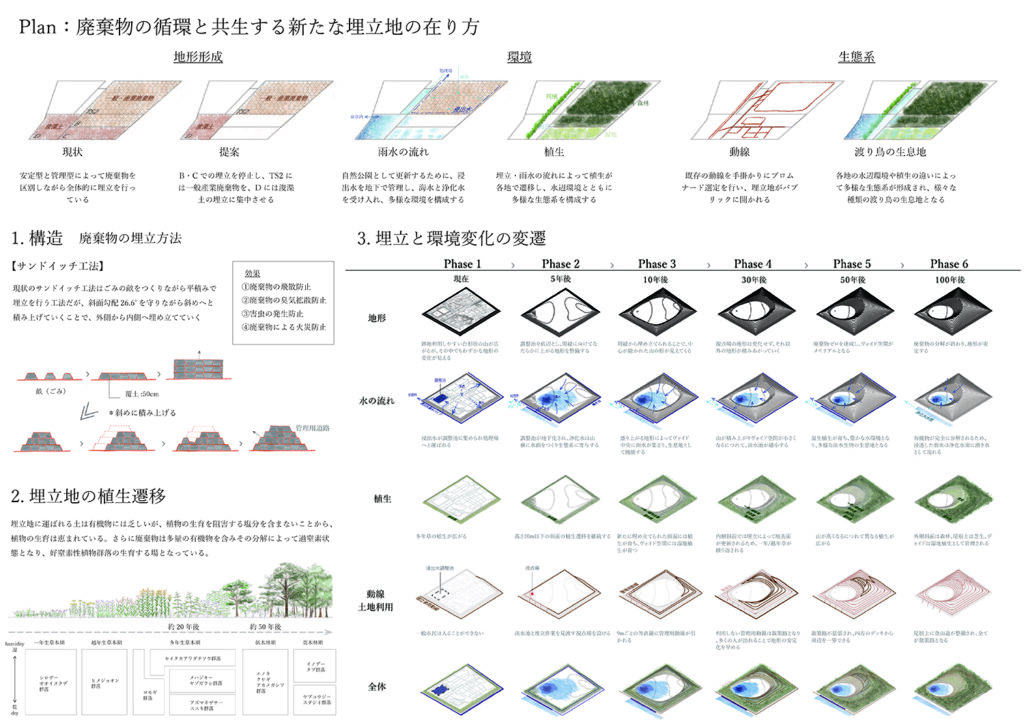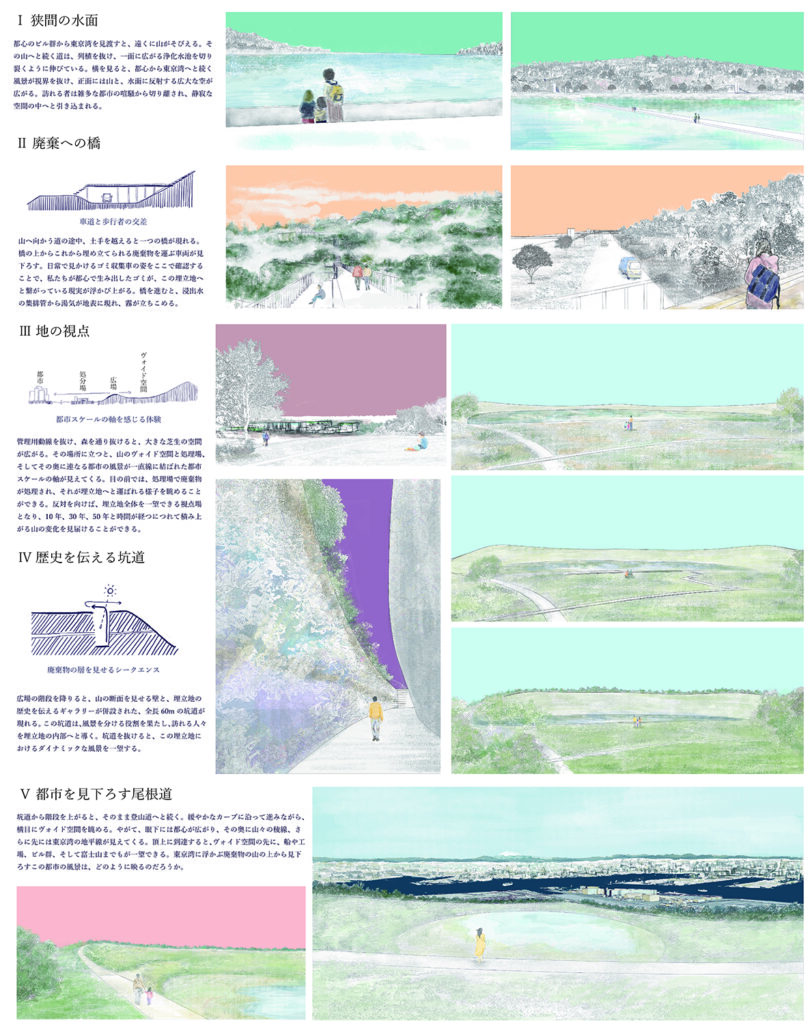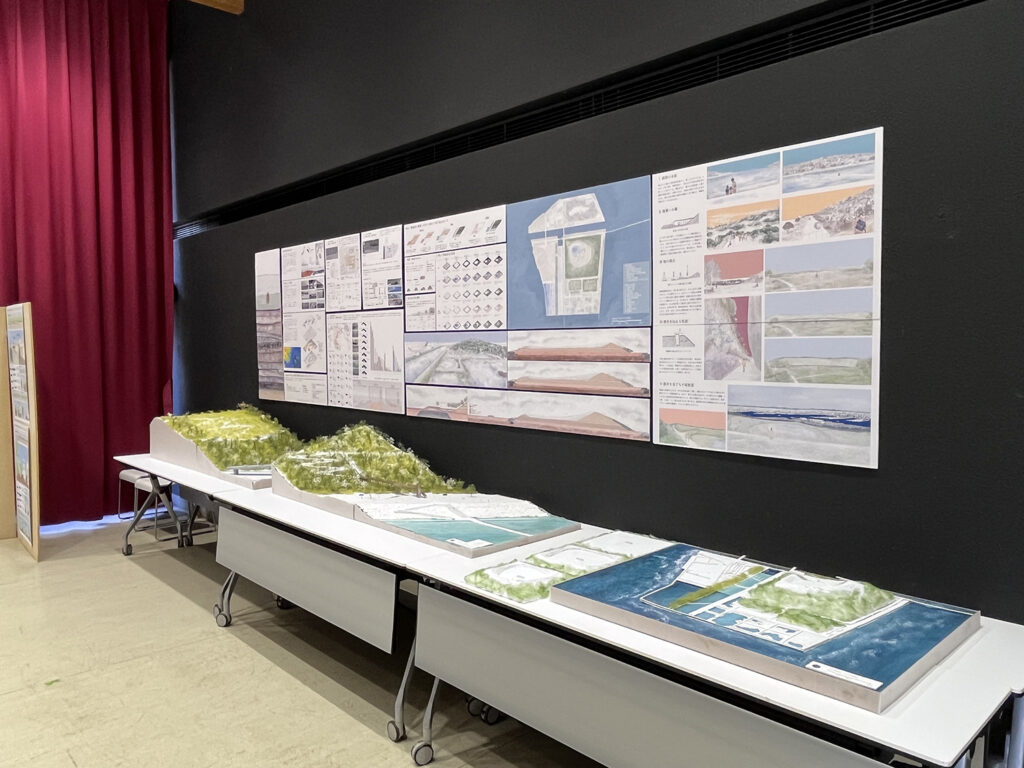廃土蘇生 -廃棄物の循環と共生が生む埋立地のリノベーション計画-
炭村 匠海
Waste Soil Revitalisation - Renovation plan for landfill sites created by waste circulation and symbiosis.
Takumi Sumimura
- JP
- EN
- tojogaoka
- 戸定ヶ丘賞
廃土蘇生 -廃棄物の循環と共生が生む埋立地のリノベーション計画-
炭村 匠海
Waste Soil Revitalisation - Renovation plan for landfill sites created by waste circulation and symbiosis.
Takumi Sumimura
東京湾に浮かぶ最後の埋立地である新海面最終処分場を対象に、埋立地の特異性を活かし、都市と廃棄物の関係を再考するメモリアルなランドスケープを提案する。埋立物、環境、生態系の関係性を基に、浚渫土の埋立による干潟と自然公園の形成、廃棄物を積層して生み出される山の創出を軸に計画を構築する。50年後の廃棄物ゼロを見据えた本提案は、埋立地へのアンチテーゼとして、埋立地を自然の再生と共生の場へ転換し、訪れる人々が都市と廃棄物の関係を体感し、未来への問いを共有する空間を目指す。
There are large-scale green spaces in Tokyo that were never protected and have lost their original function due to war and urbanization. Today, as Tokyo's aging population, increasing flooding, and other issues become more serious, we will focus on Toyama Park, and Toyama Heights, a metropolitan apartment complex, and the Toyama 3-chome residential area in Shinjuku-Ku, Tokyo, a large-scale green space that has lost its function. The history of the target sites as green spaces and their relationship with water will be investigated, and three revitalization methods will be used to create a new urban framework where people, water, and greenery intersect, aiming to promote multi-generational interaction and strengthen the urban ecosystem. Through the spread effect of green spaces, we will design a place that will be the first step toward a green space covering Tokyo.
